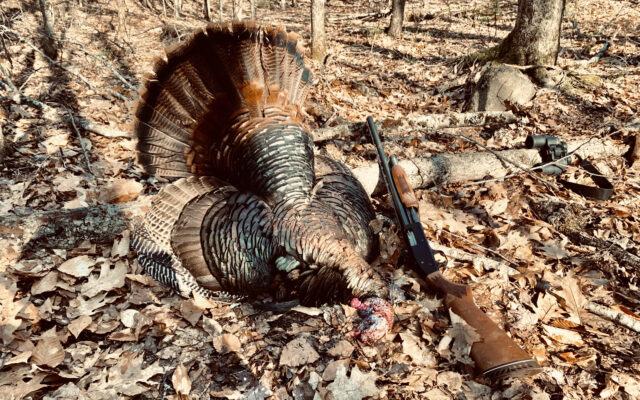
More challenging fall wild turkey hunting season begins in Maine
By Pete Warner, Bangor Daily News Staff
The bang of shotguns is audible again throughout much of Maine.
That’s because Monday, Sept. 20 was the first day of the fall turkey hunting season, one that is more challenging than during the spring.
It’s an exciting time of year for Maine hunters. Turkey hunting runs through Nov. 6, at which point it gives way to the firearms season for deer.
Gunners who prefer to pursue upland and migratory birds also are gearing up for the fall season, which runs through Dec. 31.
Hunting turkeys in the fall is a much different experience than during the spring season.
In the spring, male turkeys are caught up in mating activity and as a result are quite susceptible to calling. Hunters imitate hen yelps and other sounds to pull in the toms and jakes.
Even though the birds can be unpredictable in their response to calling, it does help give hunters ways to draw them in.
At this time of year, the calls that can be successful in the spring aren’t likely to produce much in the way of results. Instead, hunters need to adopt tactics that are better suited to the turkeys’ general behavior.
“[The] biggest thing you can do is scout. And then scout some more,” said avid turkey hunter Brhaun Parks of Kenduskeag, who spent early Tuesday morning with his son Brock. “They are creatures of habit in the fall. Where you see them one day you’ll see them the next following the same pattern and usually within 30 minutes of the time you saw them last time.”
The Maine Department of Inland Fisheries and Wildlife said the biggest challenge faced by fall turkey hunters is finding the flock.
Food is foremost on the birds’ minds and they’re not as vocal or engaged in mating behavior, so they’re likely on the move.
As it turns out, turkeys and white-tailed deer favor some of the same food, including acorns and beechnuts. Where that mast is found, you may well see feathers, droppings and scratched-up ground.
So if you happen to be trying to dial in a good spot to hunt deer — and you’re in a Wildlife Management District where turkey hunting is allowed — take your shotgun along.
And you don’t have to use a shotgun to harvest a turkey. Bows and arrows and crossbows also are legal. Just make sure you have passed the appropriate hunter safety course for those hunting methods before you head out.
One productive method in the fall is, if you find a flock, to break it by walking into it or using a trained dog.
“Scatter them in all directions. This is important,” Parks said. “They have to scatter as much as possible. Then plunk a decoy or two in the field and use light yelps and kee-kee calls to lure them back in.”
He said a hunter can sometimes get within shooting range even before the flock has a chance to disperse.
In open WMDs, turkeys of either sex and of any age are fair game. One bird is allowed in WMDs 6, 10-13, 18-19, 27 and 29, while WMD 28 permits two birds in the fall and WMD 26 allows three turkeys to be harvested.
Hunters may take as many as five birds in WMDs 15-17 and 20-25.
However, no permit holder may harvest more than two wild turkeys in a single day.
WMDs 1-5, 7-9 and 14 are closed to the taking of turkeys.
Hunters are reminded of the law enacted earlier this year that eliminates the requirement to register turkeys at a tagging station or to attach a transportation tag during the fall season.
If you harvest a banded wild turkey, DIF&W asks that you report it either by calling 1-844-234-9237 or online at wildturkeyme.org.